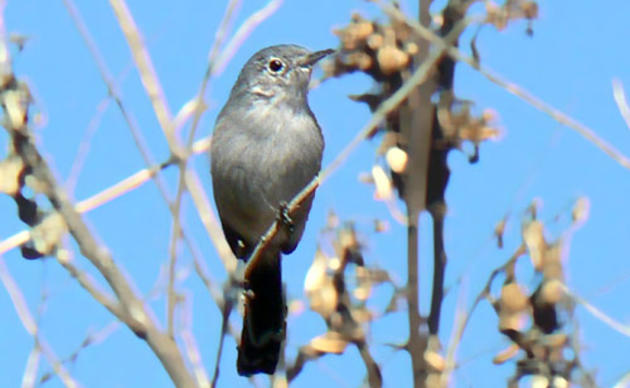
In a huge victory yesterday, the California Gnatcatcher maintained its status as a protected species thanks to a decision by the US Fish and Wildlife Service—influenced by the hard work of Audubon California and our partners. So why are we such fans of these birds? Every species is unique and special, but here’s some particular reasons to be a fan of California Gnatcatchers:
1. They don’t give up—if someone blows their house down, they start again.
As a response to the high rates of nest predation and other natural hazards that California Gnatcatchers have been faced with, they’ve learned to make nests quickly. In fact, the birds have been known to rebuild their nests up to 10 times in a single breeding season.
2. They’re songbirds… whose 3-tone song sounds like a kitten’s mew.
Thanks to the protection of California Gnatcatchers as a unique species, future generations will get to hear this song too. For now, take a listen here:
3. California Gnatcatchers are an important “umbrella” species.
Yes, umbrella. That’s because in order to save the California Gnatcatcher, we need to save the coastal sage scrub chaparral, and doing that will save a whole host of plants and animals that also need that habitat. The protections of the California Gnatcatcher are crucial step that protects the other wildlife under the California Gnatcatcher umbrella—it is also why developers have tried to get them delisted from federal protection twice.
“The California Gnatcatchers are really the posterchild of the coastal sage scrub habitat,” said Andrea Jones, Audubon California’s Director of Bird Conservation. “When the California Gnatcatcher is healthy and protected, so are a lot of other elements in the biodiversity of the ecosystem.”
As for the future of the species, Jones feels cautiously optimistic. The US Fish and Wildlife Service hired an independent team of scientists to make a recommendation on their status as a unique and protected species, and the results were clear. We are thankful—and so is the rest of the coastal sage scrub chaparral.
By Ada Statler-Throckmorton
Raise your voice for California birds
Become an Audubon California activist. Subscribe to our action alerts and we'll send you information about saving the California Gnatcatcher and other birds facing threats.




